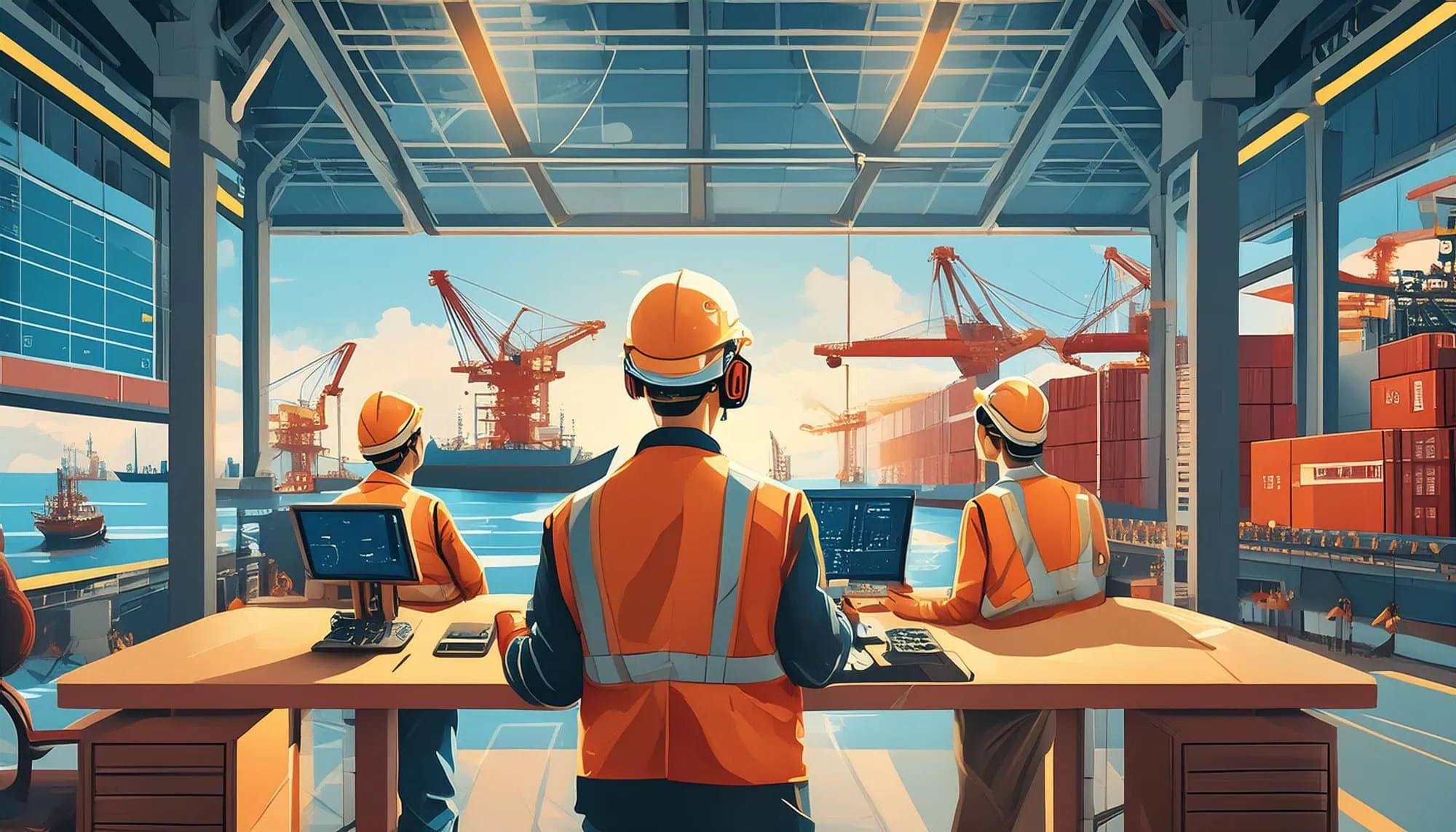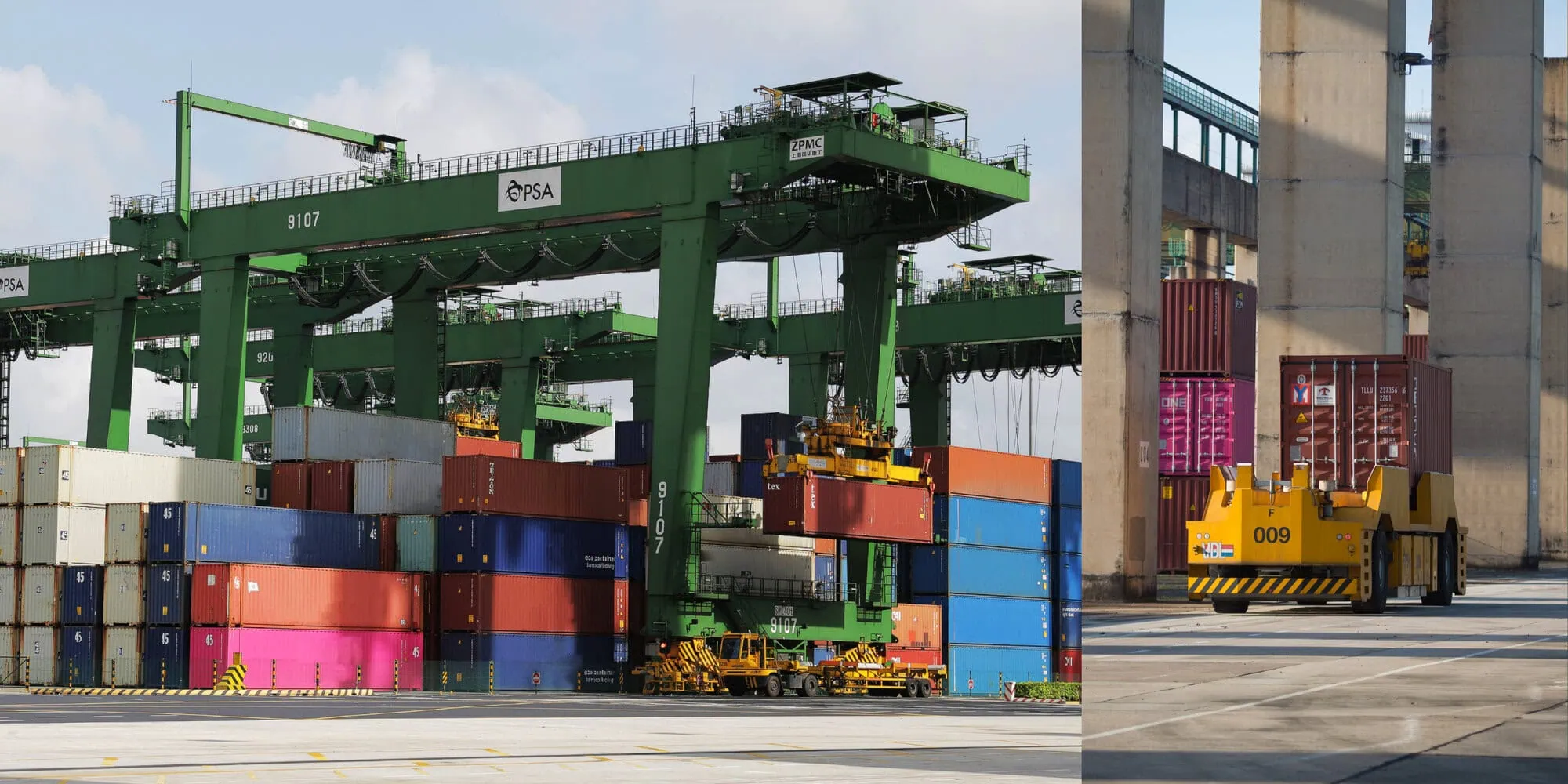
In today’s fast-paced and interconnected world, supply chains are the backbone of global trade. However, with increasing complexity and demands, traditional supply chains are facing significant challenges.
That’s where automation, visibility, and digital transformation come in – revolutionizing the way goods are produced, transported, and delivered.
Automated Ports: The Future of Efficiency

-
Reduced transit times: Automated ports can process cargo up to 30% faster than traditional ports.
-
Improved safety: Automation minimizes the risk of human error, reducing accidents and damage.
-
Increased capacity: Automated ports can handle higher volumes of cargo, meeting growing demands.
Supply Chain Visibility: The Power of Insight

-
Respond quickly to disruptions: Real-time monitoring enables swift action in case of delays or issues.
-
Manage inventory levels: Visibility helps optimize inventory, reducing waste and excess.
-
Optimize logistics: Businesses can streamline transportation and delivery with real-time tracking.
Digital Transformation: Revolutionizing Traditional Supply Chains

-
Artificial Intelligence (AI): Optimizes routes, predicts demand, and improves forecasting.
-
Blockchain: Ensures secure, tamper-proof transactions and tracking.
-
Internet of Things (IoT): Monitors and controls equipment, reducing downtime and increasing efficiency.
-
Create new revenue streams
-
Drive down costs
-
Manage risks
-
Satisfy customers
Automation, visibility, and digital transformation are the triple threat of supply chain optimization. By embracing these innovations, businesses can stay ahead of the curve, streamline operations, and revolutionize the flow of goods.
Lesson Plan
Lesson Focus and Goals:
The focus of this lesson is to understand the pivotal role of technology in modern supply chains and ports. Students will explore key technologies such as automation and efficiency, supply chain visibility and digital transformation. The goals include gaining insights into how these aspects enhance efficiency, resilience, and overall performance in global supply chains.
Materials Needed:
- Computers or devices with internet access
- Access to articles, videos, or educational resources on Automated Ports, Supply Chain Visibility, and Digital Transformation
- Whiteboard and markers
- Presentation software or tools
Learning Objectives:
By the end of the lesson, students should be able to:
- Define and explain the concepts and uses of Automation and Efficiency (Automated Ports), Supply Chain Visibility, and Digital Transformation.
- Analyse the impact of these technologies on the efficiency and resilience of our supply chains.
- Discuss the advantages and potential challenges associated with the integration of technology in global trade and logistics.
Structure/Activity:
Warm-Up:
- Discuss the previous lessons learnt on the global supply chain disruption brought about by COVID-19. Recall the key challenges faced by businesses and consumers during this period.
- Briefly introduce the upcoming lesson on the role of technology in supply chains and ports.
Part 1: Introduction to Technologies (30 minutes)

-
Automation and Efficiency (Automated Ports)
- Explain the concept of automated ports and their role in streamlining port operations.
- Show video clips or case studies illustrating how automated ports function and their benefits .
-
Supply Chain Visibility
- Introduce the concept of Supply Chain Visibility and its significance in optimizing the flow of goods.
- Discuss how visibility enhances decision-making, reduces delays, and improves overall supply chain efficiency.
-
Digital Transformation
- Provide an overview of Digital Transformation in the context of supply chains.
- Discuss how digital technologies are reshaping traditional supply chain processes
Part 2: Group Activity – Technology Impact Analysis (40 minutes)
- Divide students into small groups.
- Assign each group one of the three technologies (Automation & Efficiency (Automated Ports), Supply Chain Visibility, or Digital Transformation).
- In their groups, students should research and discuss how their assigned technology enhances efficiency and resilience in supply chains.
- Each group prepares a brief presentation to share their findings with the class.
Part 3: Class Discussion (20 minutes)
- Have each group present their findings.
- Facilitate a class discussion on the overall impact of technology in supply chains.
- Encourage students to compare and contrast the technologies discussed and identify common themes.
Assessment Criteria:
- Understanding of Technologies: Assess students’ ability to accurately define and explain Automated Ports, Supply Chain Visibility, and Digital Transformation.
- Analysis and Presentation: Evaluate the quality of group presentations, considering the depth of research and clarity of communication.
- Participation in Discussion: Assess students’ engagement and contribution to the class discussion on the impact of technology in supply chains.
- Critical Thinking: Evaluate students’ ability to analyse the advantages and potential challenges associated with integrating technology in global trade and logistics.
(OPTIONAL) Homework/Extension Activity:
Assign a reflective essay where students explore the ethical considerations and potential risks associated with the widespread adoption of technology in supply chains and ports.

